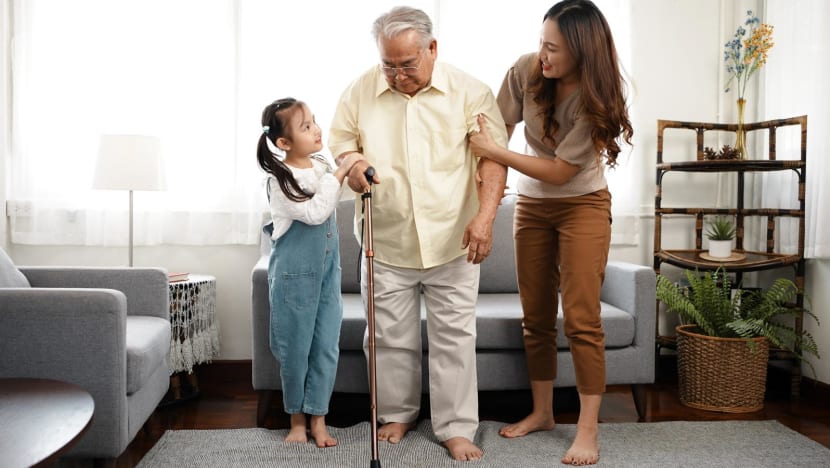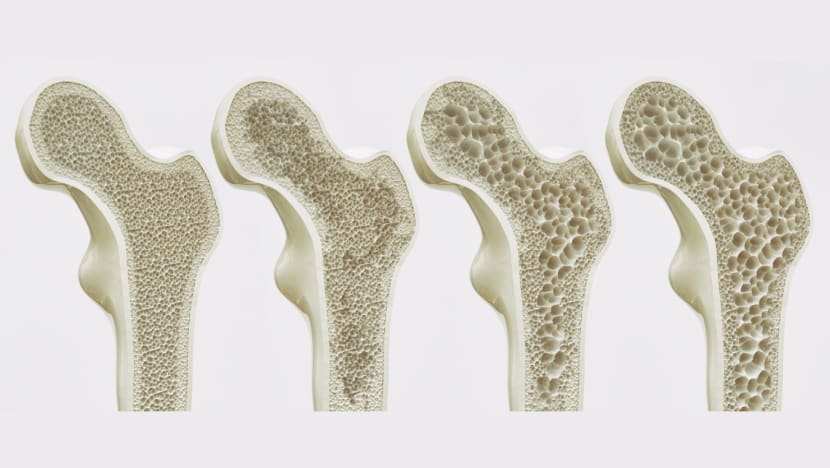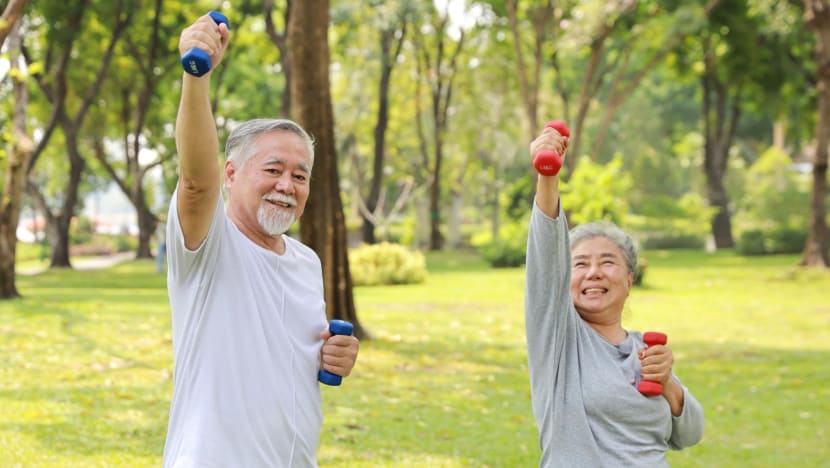Why prioritising bone and joint health early supports lifelong mobility
Strengthening your bones and joints paves the way for an active and independent lifestyle well into your golden years.

Neglecting our bone and joint health can be as detrimental as any other health issue, especially since mobility tends to decline with age. Photos: Shutterstock, Haleon
In our pursuit of good health, we often focus on visible markers like high energy levels, good muscle tone and a stable weight. But how often do we consider what’s under the skin – like our bones and joints?
According to Dr Vandana Garg, medical director at consumer healthcare company Haleon, neglecting our bone and joint health can be as detrimental as allowing muscles to atrophy or disregarding healthy body weight.
“Strong, healthy bones, muscles and joints enable us to walk, run, grasp objects and engage in activities that we love. To ensure optimal mobility in our later years, it is crucial to prioritise their health from a young age,” she said.
OSTEOPOROSIS: A SILENT THREAT TO MOBILITY
Osteoporosis is a degenerative bone condition that affects one in three women over 50 in Singapore. It often leads to fractures in areas such as the hip, spine, wrist, ribs, pelvis and upper arm.
To understand osteoporosis better, we can think of our bones as a savings bank, with calcium representing the funds we deposit. Just as we make deposits and withdrawals from our bank accounts, our bones are in a constant process of calcium deposition and withdrawal, known as the bone remodelling cycle.
Typically, individuals attain peak bone density and strength in their mid-20s to early 30s. From our younger years till the time we reach peak bone density, we deposit more calcium than we withdraw. As we age, the balance shifts and we begin to use up more calcium than we deposit, resulting in decreased bone density as well as bone tissue loss over time.
This process becomes more pronounced around menopause for women and is accelerated in individuals with inadequate intake of calcium and Vitamin D, such as lactose-intolerant individuals, pregnant and menopausal women, as well as habitual smokers and drinkers. People with osteoporosis are at a higher risk of fractures from minor movements, which can severely impact mobility and lead to other medical complications.
Osteoporosis progresses in four stages. In Stage 1, bone loss and formation occur at the same rate, typically without noticeable symptoms. Stage 2 serves as the first warning sign, when bone density begins to decrease slightly compared to normal. By Stage 3, bones have lost significant density and have become brittle. This is the stage when your doctor may diagnose you with osteoporosis. Stage 4 is where bones are severely weakened, and symptoms like changes to the spine and height loss become evident.

Early detection and intervention are crucial in managing the risk of osteoporosis. Bone mineral density tests, for example, are pivotal in measuring bone strength and density, facilitating timely interventions when necessary. This is crucial, as once the condition advances, restoring bone health becomes challenging.
PROTECTING THE FOUNDATION OF OUR MOBILITY
While bones serve as the structural pillars of our body, joints act as the essential connectors that bind them together to enable movement and flexibility. Joints are protected by collagen-based cartilage, which provides cushioning and protection during movement. If this protective cartilage becomes worn or damaged, it results in bones rubbing against each other, leading to pain and discomfort.
Like bones, our joints can suffer from progressive ailments such as osteoarthritis, which affects one in 10 Singaporeans. Individuals are at a higher risk of developing osteoarthritis if they have a family history of arthritis, are aged 40 to 60 years old, have previous joint injuries, are obese or have chronic conditions like gout and rheumatoid arthritis.
For those leading active lifestyles, it is imperative to be mindful of this risk, as they may be more prone to overuse injuries such as runner’s knee. The condition is not limited to avid runners but can affect anyone who engages in activities that place repetitive stress on the knee joints, such as cycling, basketball and soccer.

Dr Garg encourages individuals to take note of their various risk factors, and advises those with joint pain to take proactive steps in managing their joint health. “There are many causes of joint pain, and some symptoms could indicate a more significant issue that requires proper diagnosis and treatment,” she said.
“If you or a loved one is experiencing persistent joint pain, swelling, stiffness, or notices redness and warmth in the affected joints, do consult a doctor. Additionally, if the pain does not subside over a prolonged period, recurs frequently or is accompanied by other symptoms such as fever, chills or night sweats, it is important to seek medical evaluation,” she added.
ACHIEVING OPTIMAL MOBILITY THROUGH A BALANCED LIFESTYLE
From how we exercise to what we eat, our lifestyle choices play a part in helping us maintain healthy bones and joints. Over-exercising, for instance, can result in long-term injuries associated with musculoskeletal overuse.
“While exercising is essential, moderation is key,” said Dr Garg. “Focus on activities that help improve joint health, such as yoga or swimming, and complement them with brisk walking or light strength training to bolster muscle strength.”

In conjunction with exercise, diet and nutrition are important in mobility management, said Ms Joy Chong, a senior principal clinical pharmacist at Watsons Singapore.
For instance, having adequate calcium and Vitamin D (which aids in calcium absorption) in our diet is crucial to maintaining strong bones. The recommended daily calcium intake for an adult between 19 and 50 years of age is 800mg. Seniors above 50 should ideally get 1,000mg of calcium daily from their diet.
Calcium can be obtained from foods like dairy products and green leafy vegetables, such as kale and spinach, while Vitamin D can be sourced from sunlight exposure, fatty fish (salmon and sardines, for example), calcium-fortified milk and cereal.
Ms Chong advised: “Try to eat a variety of food rich in calcium and Vitamin D to meet your daily nutritional needs. But if your dietary intake falls short, you can consider taking supplements. This approach can also be beneficial for individuals who are lactose-intolerant.”

She recommends opting for supplements that offer a comprehensive blend of nutrients such as calcium, Vitamin D, magnesium for proper functioning of bone development. Some supplements also contain natural ingredients with cartilage reparation properties to combat joint health issues, such as hops extract and UC-II collagen.
Said Dr Garg: “Research has shown that the two active ingredients present in Caltrate Joint Speed – undenatured Type II collagen (UC-II) and hops extract – may reduce joint discomfort and stiffness, enhancing mobility and functionality.”
The product is suitable for adults who actively participate in sports as well as those who may be experiencing joint issues and wish to achieve better mobility.
“By incorporating holistic nutritional support into your health regimen, you can ensure better mobility and enjoy a fulfilling life as you age,” she added.
Start your journey to better bone and joint health with Caltrate and get a free bone mass density test at selected Watsons stores.
This advertorial is meant for disease awareness and educational purposes only, and should not be taken as medical advice or used as a recommendation for any specific treatment. Always consult your doctor for medical advice.
PM-SG-CAL-23-00047
















